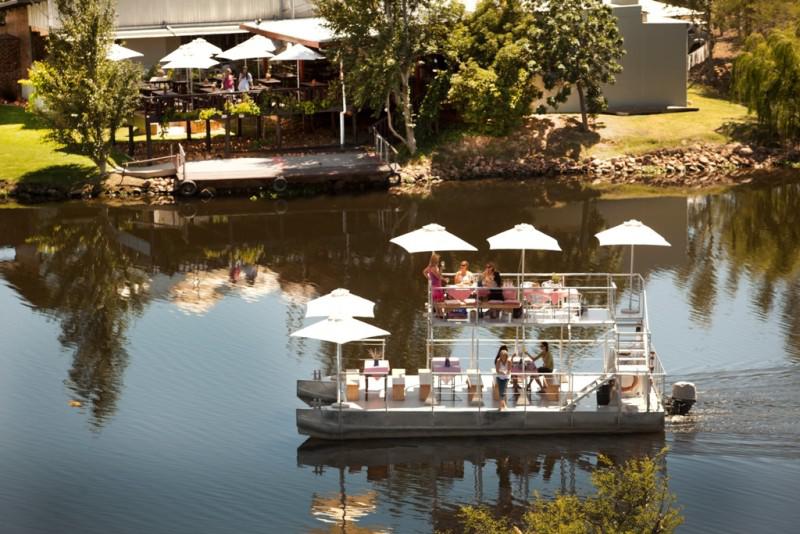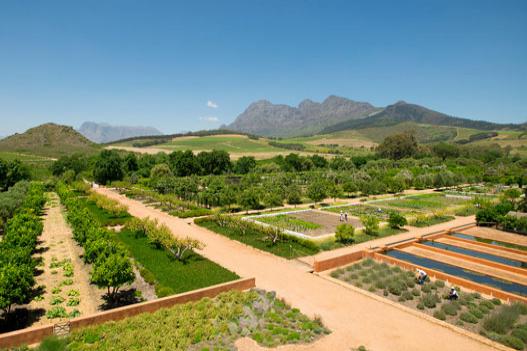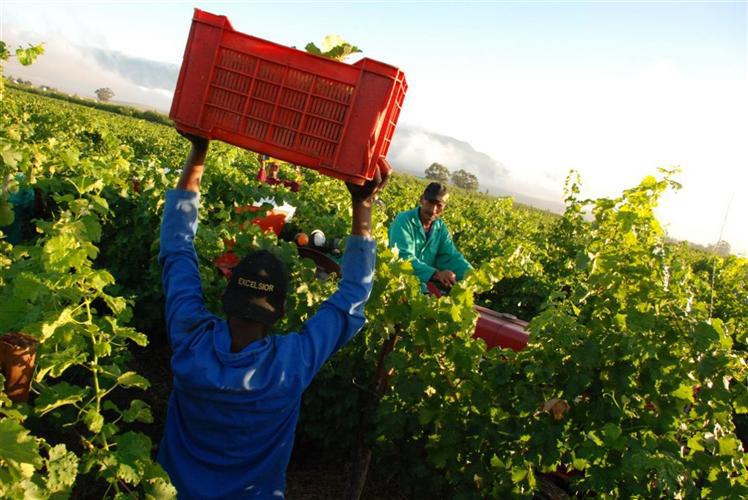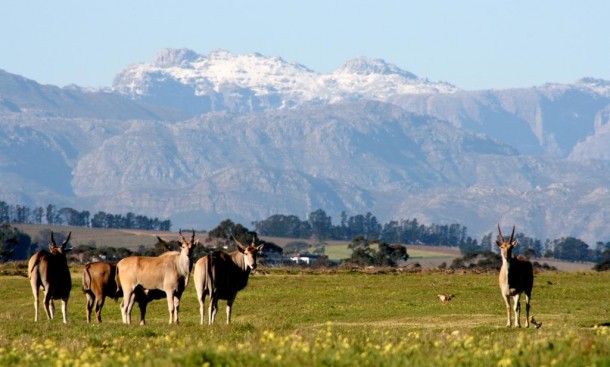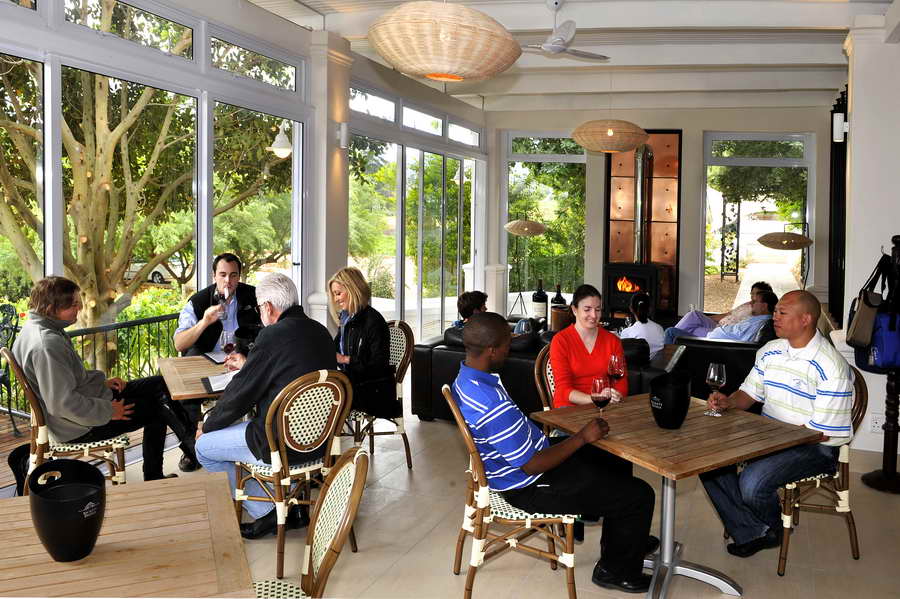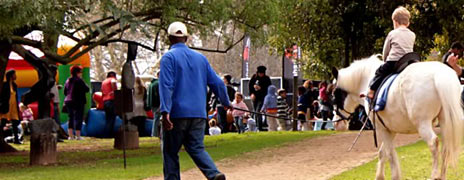In South Africa’s Cape Winelands, tasting the local vino is not just about swilling, spitting and pontificating about terroir. The Cape’s historic estates are moving with the times and expanding into all sorts of non-alcoholic areas, allowing you to mix a sample of the local pinotage with activities from vineyard safaris and garden tours to river cruises and wildlife watching. The following wine estates offer a surprising range of activities and attractions, to shake up the traditional tasting and get everyone interested in wine.
Best for art – La Motte
The town of Franschhoek, founded by French Huguenots (its name means ‘French corner’ in Dutch), is a culturally inclined part of the Cape Winelands. There is no better place to enjoy this South African slice of Gallic sophistication than La Motte, established in 1709 by Huguenot Pierre Joubert, who named the estate after his birthplace in Provence. Now owned by the Ruperts, one of South Africa’s richest families, La Motte’s Cape Dutch buildings house a tasting room, gourmet restaurant and museum. The latter includes a room devoted to the work of Jacob Hendrik Pierneef, South Africa’s great landscape painter; additionally, guided walking tours look at the historic estate’s 18th-century buildings and sculpture collection.
Best for a wine safari – Waterford Estate
This scenic estate nestles in the Blaauwklippen Valley, between South Africa’s wine-making capital, Stellenbosch, and the sweeping curve of False Bay. The 120-hectare farm, with its citrus groves, rolling lawns, water features and lavender beds, is an inspiring setting for improving your knowledge of viticulture. Its tasting safari includes a two-hour Land Rover jaunt around the vineyards, with glimpses of its sustainable agricultural practices and biodiversity program. Waterford has only placed half its land under vines, resulting in stunning opportunities to see the flowers and fynbos of the Cape Floral Kingdom climbing Helderberg mountain. For further insights into the terroir hereabouts, visit the tasting room for a wine and chocolate pairing.
Best for a river cruise – Viljoensdrift
The Robertson Wine Valley is a slightly off-the-beaten-track wine region, offering rustic experiences alongside its wineries, many of which line the Breede River. To enjoy all of the above, hit the modern tasting room at Viljoensdrift estate. Buy a bottle and assemble a gourmet picnic in the deli, before boarding the flat-bottomed boat for a one-hour cruise along the vineyard-nourishing river. While you sun yourself and gaze at the Langeberg and Elandsberg ranges, spread a cracker with some olive tapenade and open a bottle of Viljoensdrift’s crisp bubbly. As the local Afrikaners say, lekker (tasty).
Best for gardeners – Babylonstoren
This historic estate is one of the Cape Winelands’ most interesting, its garden inspired by those planted when Cape Town was a Dutch East India Company refreshment station. The eight-acre formal garden is a gorgeous and fascinating place to wander or join a tour; unique plants, such as an olive tree from the Garden of Gethsemane, can be spotted among the koi ponds, pergola-shaded paths, water furrows, fruit trees, tasting room and two restaurants. Babylonstoren’s green-fingered team cultivates the 300 edible plants, indigenous herbs and prickly pear maze using historic and modern horticulture techniques.
Best for budding winemakers – Excelsior
Another Robertson estate, Excelsior dabbles in both wine and horses – the whole area is famous for stud farms, fruit and wine. Visitors are discouraged from horse rustling, but they can roll up their sleeves and try the ancient art of winemaking. The blending experience puts you in a winemaker’s boots and allows you to create your perfect bottle, all the way through blending, bottling, corking and labelling. Afterwards, see how your concoction compares with a bottle of Excelsior wine in the estate’s Graze restaurant.
Best for wildlife watching – Villiera
A domestic flight normally separates South Africa’s northern wildlife reserves from the Cape’s glorious wine country, but Villiera offers the best of both. The Stellenbosch winery offers two-hour drives through its 220-hectare wildlife sanctuary, which it established with two neighbouring farms. Among the dams, indigenous trees and marshland, you can spot giraffes, Burchell’s zebras, bushpigs and various antelopes, including kudu and black wildebeest. The sanctuary is part of the family-run estate’s environmental ethos – a flock of 1,000 Pekin ducks takes care of pest control.
Best for boules – Rickety Bridge
Franschhoek’s Gallic heritage can be seen throughout its vineyard-carpeted valley, from the Huguenot Memorial Museum and Monument to the Bastille Day Festival and profuse crêperies. For a hands-on experience of this European heritage, head to Rickety Bridge for a gentle game of boules, the French version of bowls, in the vines. The boutique winery, where Huguenots began making the good stuff in the 17th century, also offers scenic walks to admire its beautiful gardens and birdlife – and a dozen wines to taste. The Franschhoek Wine Tram (winetram.co.za) stops here.
Best for nature walks – Groote Post
On the West Coast near Darling, Groote Post’s land features a significant percentage of South Africa’s total population of endangered renosterveld, part of the Cape Floral Kingdom. Nature walks and farm drives offer opportunities to see wildflowers, ostriches and antelopes – and to spot distant Table Mountain from the vineyards. Groote Post is on the West Coast Flower Route, a scenic drive from Cape Town to see wildflowers carpeting the area in late August and early September.
Best for mushroom foraging – Delheim
Part of the Greater Simonsberg Conservancy near Stellenbosch, Delheim organises occasional mushroom-picking expeditions in the forest, led by fungi fundi Gary Goldman (AKA the Mushroom Guru). Run by the winemaking Sperling family, the estate has an environmental policy with practices such as renosterveld conservation and water recycling. For fast-paced fun, inquire at nearby Dirtopia activities centre; the Simonsberg has various mountain biking and trail running events and routes.
Best for families – Blaauwklippen
Stellenbosch’s Blaauwklippen is fun for both wine lovers and their children, with pony and carriage rides, friendly goats to feed and a jungle gym. Crystal the pony offers rides every Sunday at the family market, which takes place between 10am and 3pm and features food, craft and wine stalls and live music. Picnics are available in summer, while activities such as wine and chocolate pairings and cellar tours keep adults happy.
Want to discover the finer side of Africa? Sign up for our weekly newsletter.


